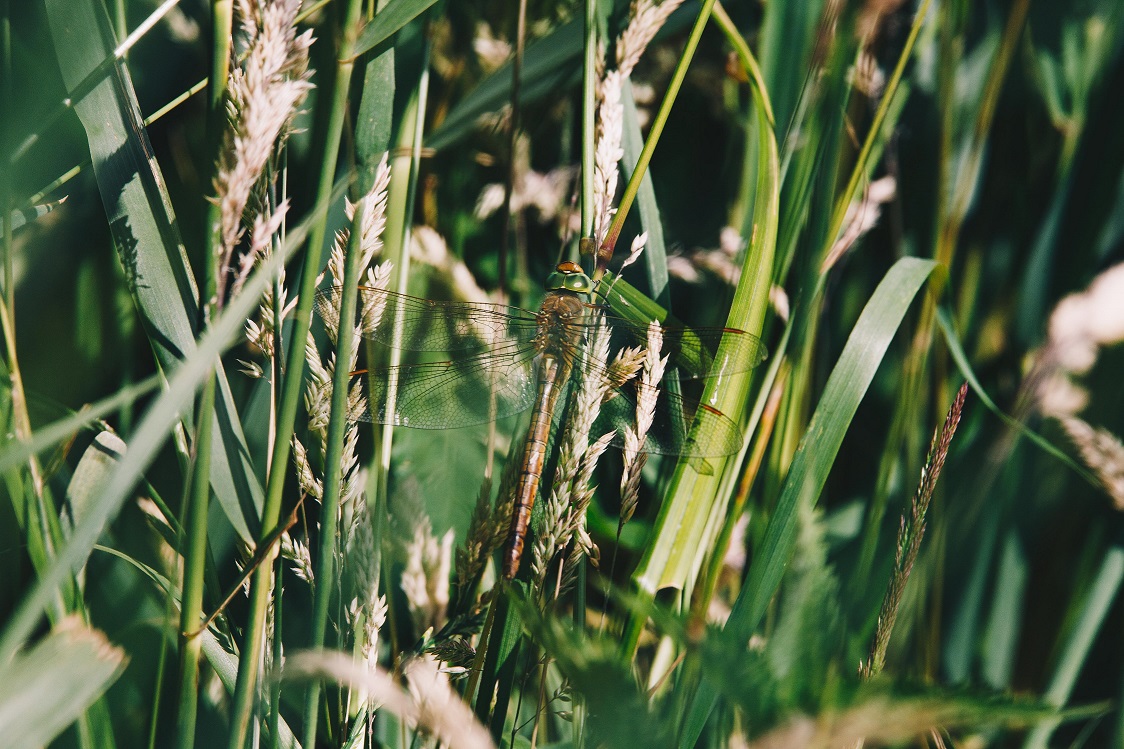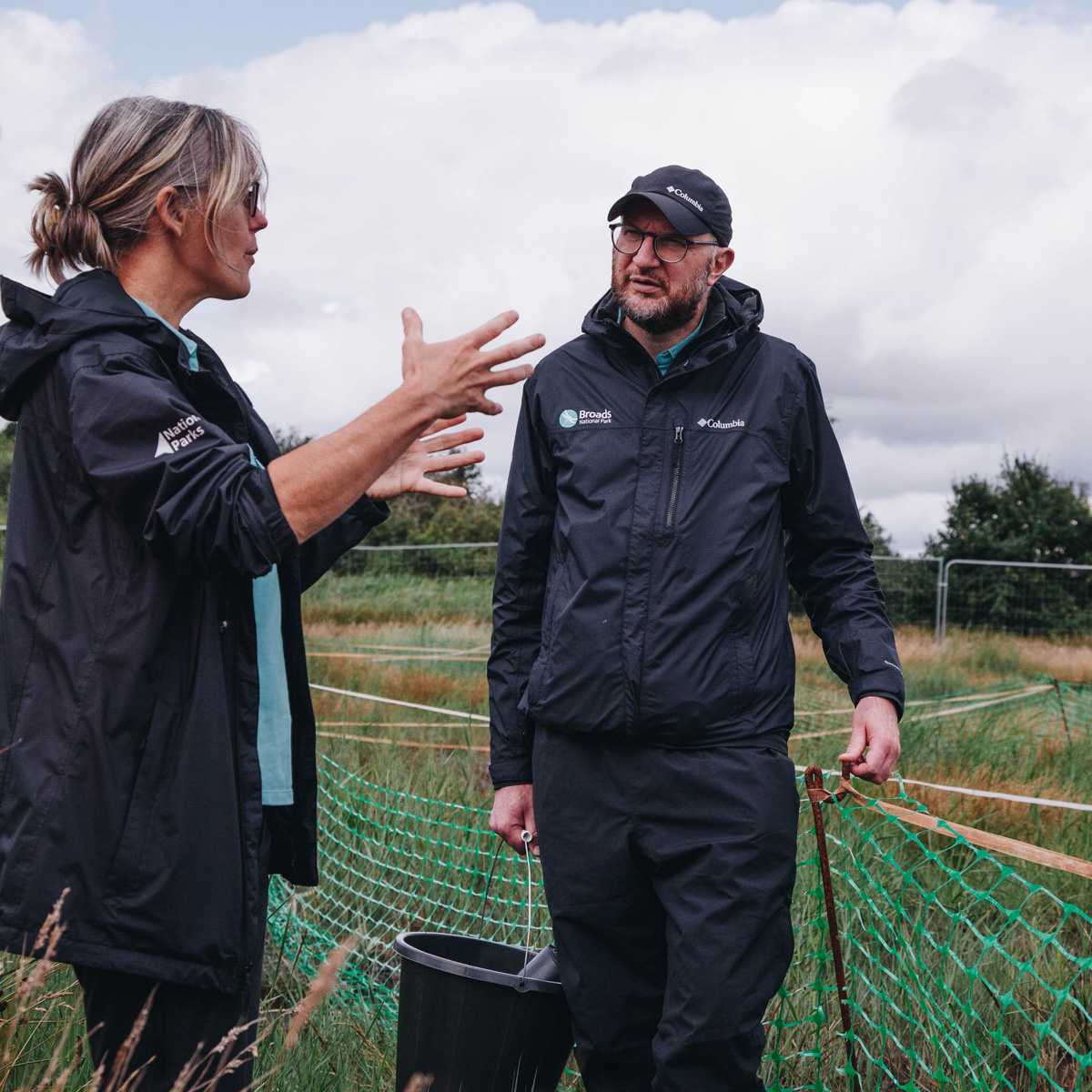Rare Norfolk Hawker dragonfly spreads its wings
Recent reports suggest that the once rare Norfolk Hawker dragonfly (Aeshna isoceles) has now extended its range from Norfolk, with the species having been spotted as far away as Lancashire, South Devon and Sussex.

Thirty years ago the future of the Norfolk Hawker with its bright green eyes and a gingery body was a bleak affair. Following its extinction from the Cambridgeshire Fens as far back as 1893, the only known breeding sites for this species prior to 2013 were in East Norfolk and East Suffolk.
All other records between these dates were of single, wandering individuals, with some possibly migrating in from elsewhere in Europe. Up until the 1990s it was almost entirely restricted to the Broads, but from 2001 onwards it started to expand across Norfolk and Suffolk, later becoming well established in Cambridgeshire, Kent and Herefordshire.
The spread of the Norfolk Hawker continued with two records near Wigan in June 2022, making it the first records in north-west England and there were indications of a breeding population at this same site. It has also been seen in Bolton and Blackpool. There have been multiple sightings and egg-laying in South Devon, and also in Dorset, Sussex and other southern counties as recorded in annual surveys by the British Dragonfly Society.
Possible reasons for recent range expansion
The initial spread in East Anglia was westwards from the Broads and southwards along the coastal marshes of Suffolk. The population which grew around the southern edge of Norwich was greatly assisted by water quality improvements and habitat creation in areas of former gravel pits, such as at Whitlingham Broad.
However, the recent spread and colonisation of Norfolk Hawker in counties beyond Norfolk and Suffolk is most likely due to climate change, with habitat changes also playing a significant role. As average temperatures have risen, the Hawker has been able to expand its range both to the north and west of its previous limits. Some of the colonies in southern England could also be made up of incoming Hawkers from continental Europe.
The Norfolk Hawker is still listed as Endangered in the Odonata Red Data List for Great Britain and is protected in law by Schedule 5 of the Wildlife and Countryside Act 1981. The Red Data list is currently under review and the species status both here and in law is likely to be downgraded soon as a consequence of its recent range expansion.
Reasons to celebrate?
Many of the Hawker’s original East Anglian breeding sites are vulnerable to sea level rise and saline intrusion, making the species highly susceptible to extinction in these areas. However, many of these new colonies are inland or in areas not subject to these threats, thereby giving it a more secure future in Britain and leading to a potential downgrading from the endangered species list.
While this spread could be interpreted as good news, it is not a clear reason to celebrate as there will be many species who are winners and losers as the climate continues to change. Wetland habitat in particular is under threat and several other species of dragonfly have not been lucky enough to increase their ranges.
Results from the State of Dragonflies in Britain and Ireland 2021 report show that the Black Darter has shown a 12% decline in population since 1970 and the Common Hawker has shown an 8% decline over the same period. Upland and heathland dragonfly species such as these have faced the most noticeable declines, particularly so in England, and climate change is believed to be the main driver behind this.
Small Red Damselfly and Scarce Blue-tailed Damselfly have also declined significantly since 1970. These are both species of seepages, pools and small streams. These shallow water areas are subject to damage from increased drought caused by the changing climate. One site where Small Red Damselfly may already have been lost is Scarning Fen in Norfolk. There were no reported sightings of the species there in 2023, following the extreme heat of July and August 2022.
The Hawker’s spread is in contrast to other threatened iconic Broads’ species such as the Swallowtail butterfly which has suffered its worst summer since records began and is expected to decline further this year due to prolonged winter flooding in the Broads.
The British Dragonfly Society is concerned that ponds, streams, and rivers are under threat of future drought and that dragonflies need these wetlands to survive.
Dr Pam Taylor, Convenor of BDS Dragonfly Conservation Group, British Dragonfly Society, urges caution:
“Although the Hawker’s overall range has expanded greatly, there are still huge gaps in its current distribution.
“It will need to infill many of these gaps before the species is truly secure in this country and only time will tell whether it will succeed."
Broads Authority, Environment Policy Adviser Andrea Kelly said:
“What appears to be good news about the spread of the Norfolk Hawker and its potential relisting as no longer endangered, is in fact a call to action about the significant threats to its precious wetland habitat.
“The only way to ensure no further species loss is to continue to protect and restore its current wetland and fen habitats in the Broads and across East Anglia.”
Tuesday 27 February 2024


